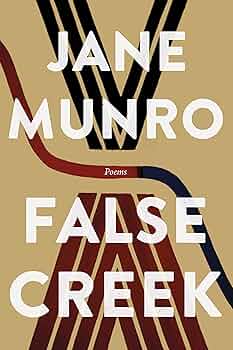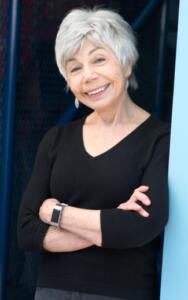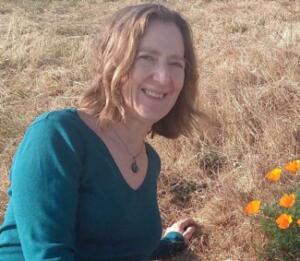1885 Poetic ‘intelligence, curiosity, wonderment, and humility’

False Creek
By Jane Munro
Madeira Park, BC: Harbour Publishing, 2022
$19.95 / 9781990776090
Reviewed by Jodi Lundgren
*
I happened to open False Creek after a few days’ immersion in Milton’s Renaissance epic, Paradise Lost, and was unexpectedly struck by continuities between the two works. No, Munro’s book is not a narrative poem, much less an attempt to “justify the ways of God to man,” but, among other shared traits, both poets are highly allusive. In her parameter-setting opener, “When Vesuvius Blows Up,” Munro situates contemporary Vancouver and its climate crisis alongside places from ancient history (Pompeii, Herculaneum) and figures from classical mythology (Pluto, Proserpine); added to her use of scientific vocabulary (lapilli, mycelium), these references establish a temporal, spatial and lexical breadth that it seems no exaggeration to describe as “epic.” Reaching beyond the Western literary tradition, Munro dextrously handles source materials that range from Hindu theology and theoretical physics to international visual art. In poems that are as philosophical as they are ecological, she inquisitively juxtaposes fragments of knowledge from various disciplines and contemplates their implications.
In the eponymous first of the book’s four sections, the speaker struggles to reconcile contemporary experience as a settler born and raised in Vancouver with more recently acquired knowledge of the area’s Indigenous history. In “Walking Home from Vanier Park,” the speaker admits her ignorance of cultural practices that long preceded the park’s existence: “I didn’t know I’d arrived // walked right over the site where the longhouse sat / I didn’t know.” False Creek is aptly named, Munro implies, because English- (or French-) language place names are colonial impositions that mask the region’s significance from Indigenous perspectives. In the title poem, Munro attempts to suspend most of the current uses and occupants of False Creek (“tubby little ferries,” “stack of yellow wheelbarrows for marina members”) and to restore native species of animals and plants by listing their names. The precise vocabulary evinces a concentrated effort to shift from ignorance (“I don’t know the names / for these […] / fish, birds, animals”) to respectful recognition of “surf smelts—oolichan—herring spawn.” Acknowledging her own complicity in a settler history that is “erasing / the goodness/of [her] family,” Munro also depicts the resilience both of Indigenous peoples and of the land itself:
the blue mountains, blue sea, blue sky
today
look as they looked
long before
newcomers named this shore
Sunset Beach
For all her erudition, Munro uses direct, penetrating language, the starkness of her self-examination paralleled by the clarity of her images.
From this socio-political register, Munro turns to one that is both embodied and galactic in the book’s second section, “Coming out of Choices.” The gibbous moon is described as “swollen as a pregnant belly” by a speaker who remembers a pregnancy of her own, addressing at first her unborn child and, eventually, “you, moon.” In the much more startling poem that follows, an enigmatic “you” with “blouse drenched” is “nursing the moon,” which waxes from new to full by “sucking milk out.” Using the language of astrophysics in the subsequent poem, Munro describes “a jet of ghost particles aimed at us / blazar—the gulping / remote emitter of neutrinos.” Here, I can’t resist noting that the Renaissance astronomer Galileo is the only contemporary of Milton’s mentioned in Paradise Lost: not unlike Munro, the epic poet concerned himself with both metaphysical and scientific views of the heavens. Munro, though, credits not the Christian God but “the primordial snake, / Adi Shesha” with “sustaining the universe.” Through these kinds of perspectival changes, surprising comparisons, and diction shifts, Munro repeatedly upends expectations: don’t get too comfortable, she insists; stay “light on your feet.”

Indeed, Munro’s poems seem designed to build neuroplasticity. Several poems are constructed in ghazal-like couplets, and it requires mental gymnastics to leap from one resonant pair of lines to the next. In “Moon Boat,” Munro unevenly alternates couplets with single-line stanzas, skilfully positioning both facts and line breaks to create double syntax. A technique also favoured by Milton, double syntax causes the reader to pause, re-read, and either correct (in Milton) or expand (in Munro) their initial understanding. For example, while visiting “the Great Pyramid of Giza” as a tourist, the speaker finds her throat irritated by dust that is at once present-day and, thanks to enjambement, ancient:
twenty-two million in Cairo
[…]
the frog in my throat
the dust of Cairo
in King Tut’s time
fewer than two million
humans on this globe
To conceive of coughing on dust from “King Tut’s time” involves an imaginative flight, but one grounded in the reality that atoms are endlessly recycled and recombined. In turn, the phrase “in King Tut’s time” doubles as the beginning of the next thought: “fewer than two million / humans on this globe.” Having referenced the current population of “twenty-two million in Cairo,” Munro deftly switches category from city to planet, in this way making graspable the exponential population explosion in our species’ short history.
This masterful, accordion-style expansion and contraction of time and space recurs in the final two sections of the book, including when Munro explores ephemerality in “Goods Seem Sure,” a poem seemingly prompted by the January 6, 2021 attack on the U.S. Capitol: “a democracy // you don’t expect one to fail/no, it takes an axe to break one.” Not only does this poem cover centuries of British monarchic rule (“six Georges were sure”), but it compresses epochs of evolutionary history in noting a surprising biological similarity between humans and “our woodlouse ancestors.” In the book’s final section, “The Golden Boat,” the author uses the ekphrastic form to extend her key themes and images in new directions, as when the speaker of “His Huge Canvasses” approaches the work of Takashi Murakami in a gallery:
I step closer
see manifold details
as if through a telescope, I look
at light from earlier and earlier
Juxtaposing ideas and details from diverse fields (in this case, visual art and astronomy) to create new vantage points is one of Munro’s most characteristic and effective techniques, and she uses it adroitly throughout the volume to both make connections and unsettle assumptions.
By the end of the book, False Creek itself appears in many guises, including as an “inlet which is also an outlet” where a broken-footed speaker “walked every day / in an aircast” and as “Vancouver’s keel of grief” where those who are “coffined during lockdown/in cement blocks / do not walk.” The sounds of lids or doors clicking shut is audible in the rhyming syllables of “lock” / “blocks” / “walk,” a rare instance of Munro flexing her capable musical muscles, another being her rich use of assonance in “MacKay Creek” to evoke an experience of bliss and plenitude in nature. By choice, then, Munro’s artistry is more architectural than musical, and her carefully crafted poems impress with their intelligence, curiosity, wonderment, and humility.
In the words of Oxford University’s Joe Moshenska, “There’s this fascinating tug of war in Milton’s mind between a very bookish and scholarly mindset, where he sees the world through the wisdom of the ancients and all the classical mythology, and this total fascination with the immediacy of the world around him.” The same holds true of Munro, a poet whose work will stimulate and widen the minds of readers who open themselves to receive it.
*

Jodi Lundgren, Ph.D., belongs to the Open Learning Faculty at Thompson Rivers University, where she teaches literature and writing. A settler of English and Danish descent, she lives on the traditional territories of the Lək̓ʷəŋən and W̱SÁNEĆ peoples. Editor’s note: Jodi Lundgren recently reviewed Peter Wohlleben and Jane Billinghurst in BCR.
*
The British Columbia Review
Interim Editors, 2023-24: Trevor Marc Hughes (non-fiction), Brett Josef Grubisic (fiction)
Publisher: Richard Mackie
Formerly The Ormsby Review, The British Columbia Review is an on-line book review and journal service for BC writers and readers. The Advisory Board now consists of Jean Barman, Wade Davis, Robin Fisher, Barry Gough, Hugh Johnston, Kathy Mezei, Patricia Roy, Maria Tippett, and Graeme Wynn. Provincial Government Patron (since September 2018): Creative BC. Honorary Patron: Yosef Wosk. Scholarly Patron: SFU Graduate Liberal Studies. The British Columbia Review was founded in 2016 by Richard Mackie and Alan Twigg.
“Only connect.” – E.M. Forster
2 comments on “1885 Poetic ‘intelligence, curiosity, wonderment, and humility’”
Excellent review. Jodi Lundgren captures the nuances of Jane Munro’s poetics, her use of paradoxes and blending of the past and present.
Great review and have loved Jane Munro’s poetry for years.